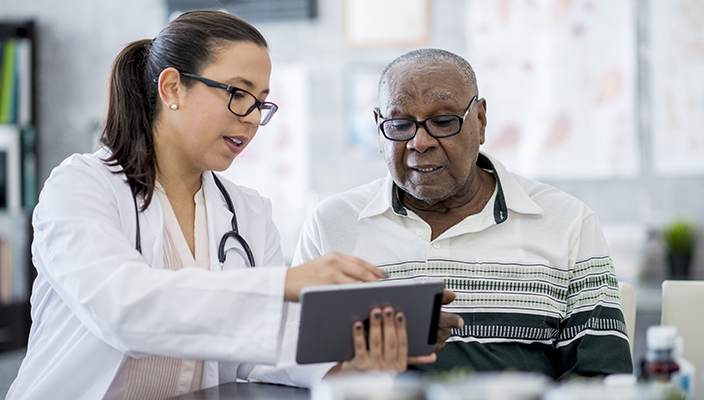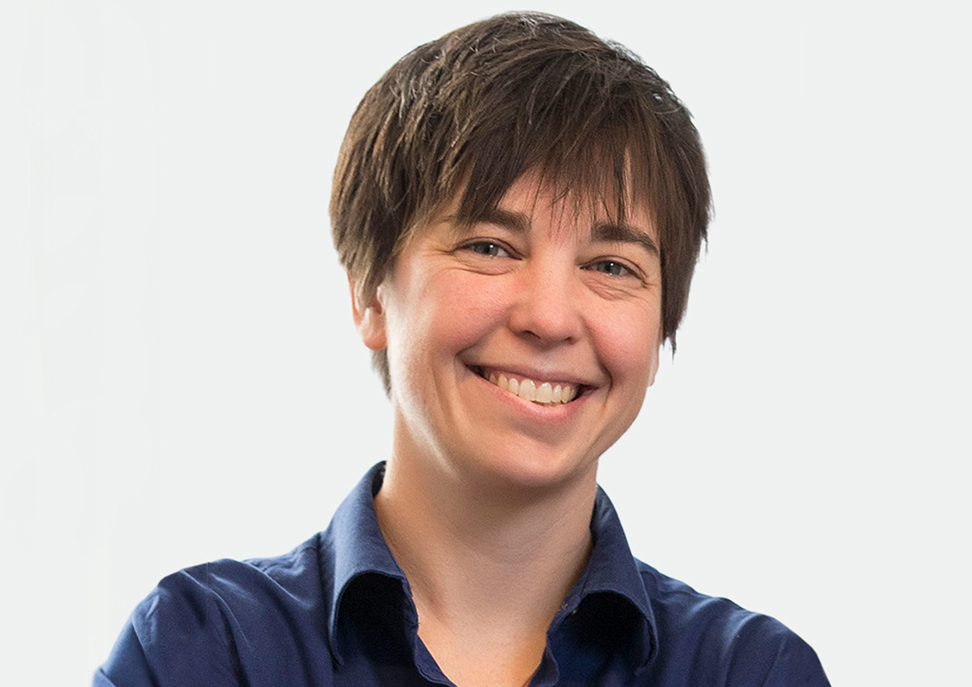Where you live affects how you feel. Because everything around you contributes to your health. That includes the food you eat, the places where you spend your days, and the air you breathe. Or how far you live from medical care.
That is a central idea of the All of Us Research Program. Enrolling people from different backgrounds and neighborhoods is the key to precision medicine.
People who live in rural areas have unique experiences to share. All of Us already has more than 70,000 participants who live in rural areas. That’s about 9% of our participants. But 20% of people in the United States live in rural areas. So we know we can do more.
The Heartland Consortium is a new group of All of Us enrollment partners in four Midwestern states. The group came together last year and is already enrolling people in All of Us.
The Heartland team aims to enroll diverse All of Us participants in Kansas, Missouri, Iowa, and Nebraska. The group held a launch event last month in Kansas City, Kansas.
“We have to reach the whole country,” said All of Us CEO Josh Denny, M.D., M.S., at the launch event. Dr. Denny grew up visiting family members in rural areas. His brother is a farmer. “The idea of helping fill in this important part of the country is key,” he said.
Far From Health Care
Akinlolu Ojo, M.D., Ph.D., MBA, is the Executive Dean of the School of Medicine at the University of Kansas Medical Center. He’s also the head of the Heartland Consortium.
Dr. Ojo says living in a rural area can mean being far from health care. “There are many places in Kansas where getting to the nearest city with a health care facility is a four-hour drive each way.” Dr. Ojo said.
Just to the north of Kansas is Nebraska, another state in the new partnership. It has 93 counties. In 2021, more than 12 of them had no primary care doctor at all.
In those places, getting help when you’re sick or hurt can be a real problem. If a simple doctor’s visit takes all day, people may delay getting care. That includes check-ups, regular screenings, and treatment for serious diseases.
One of the surveys All of Us participants fill out is called Health Care Access and Utilization. You may have filled it out yourself. It asks whether you’ve delayed getting medical care because “you live in a rural area where distance to a health care provider is too far.” As of February 2023, 3.2% of participants had responded “yes.”
A Variety of Health Challenges
Dr. Ojo is not from a rural area himself. He was born and raised in the huge city of Lagos, Nigeria. But he did some of his medical training in rural Kentucky. His wife grew up there, in a small town. Her parents were tobacco farmers.
From his experiences in Kentucky and Kansas, where he works now, Dr. Ojo has learned a lot about rural areas—and how much they can differ from each other.
For example, in rural Kentucky, Dr. Ojo cared for farmworkers with nicotine poisoning from brushing up against too many wet tobacco leaves during the harvest.
In Kansas, on the other hand, many people in rural areas work in meatpacking. These jobs come with their own risks. For example, in meatpacking plants, people must be close together while they work. During the COVID-19 pandemic, infection rates were high among these workers.
People in rural areas come from diverse backgrounds. In several rural counties in southwestern Kansas, for example, more than 10% of the population was born outside of the United States. In some of those counties, it’s more than 25% of residents.
There are many other ways rural areas can vary. Where water comes from is one example. Another is the type of food you can buy. For example, “food deserts” are places where it is hard to buy fresh vegetables or other healthy foods. Food deserts exist in urban areas, but also in rural ones. Some people can grow their own food, but not everyone has the time and space to tend a vegetable garden.
Taking Research to the People
The Heartland Consortium brings together four academic medical centers: The University of Kansas, the University of Iowa, the University of Missouri, and the University of Nebraska. There are already 10 consortia in other parts of the country.
The new partners will be signing up people in cities and suburbs—and engaging with rural populations.
“We know that these people are not hard to reach if the researchers make an effort, and if we take research to the people,” Dr. Ojo said.
And the researchers will be making an effort.
The team will also partner with community organizations and houses of worship across the region. They plan to also have mobile units—similar to the All of Us Journey—so they can travel the region, tell people about All of Us, and give them a chance to enroll.
County extension offices will help with reaching rural residents too. These offices are well known in rural communities. A county extension agent offers everything from cooking classes to information on fertilizer or when to plant crops. In some counties you can even get vaccines at an extension office. Now people will be able to learn about All of Us there too.
Work in Progress
Researchers are already using data provided by All of Us participants to learn about rural health.
The All of Us Research Projects Directory lists many projects focused on people who live in rural areas. For example, one study focuses on whether they have more trouble managing long-term diseases. Another looks at people with diabetes. Another project is on cancer screening—which some people might skip, if the closest place to do it is hours away.
Our new partners’ work will bring All of Us to the wide open spaces of Kansas, Missouri, Iowa, and Nebraska. Having more health information from people who live there will help advance research. Over time, it may even help health care providers better take care of the people who live in rural areas—and all over the United States.









